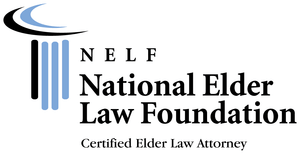IRA Annuity
/Susan was worried about the cost of her husband's upcoming nursing home care. She had been caring for her husband Thomas as well as she could, but soon he was going to need more care than she could provide to him at home.
Susan and Thomas had a total of $155,000 in cash assets. $46,000 of the total was in Susan's IRA held in two certificates of deposit at her bank. The remaining $109,000 was in accounts held jointly by them as husband and wife. Their income, apart from the interest on their investments, came from Social Security checks. Thomas received $760 per month and Susan received $600 per month.
Susan, being younger than her husband, was worried that the nursing home would eat up all of their savings, and that she would have nothing left on which to live. However, with proper planning, Susan was able to protect much of the estate that she and her husband had worked so hard to accumulate.
First, after discussing with her the risks regarding treatment by the local Medicaid office, Susan converted all of her IRA's at the bank into a special annuity. She did this with the objective of not having her IRAs count as a cash asset available to pay for her husband's care. She then took another $29,000 that she held jointly with her husband and purchased another qualified annuity in his name.
When Thomas went into the nursing home, Susan applied to have the Medicaid program cover the cost of her husband's nursing home care. Susan was receiving a monthly payment in the amount of $389 from her IRA. She received an additional check in the amount of $189 every month from the $29,000. Medicaid was informed of the annuities. When the Medicaid caseworker asked what cash assets she and her husband owned, Susan replied that they had $80,000 in cash. The $75,000 in annuity money ($46,000 from her IRA's and $29,000 from the second annuity) did not count as an asset. The case worker advised her that she would be allowed to keep one half of the cash or $40,000, plus Thomas would be entitled to keep $1,500. The remaining $38,500 would have to be "spent down" by her husband.
Susan "spent down" this money by paying down her husband's outstanding medical bills, purchasing prepaid burial plans for the both of them, and trading in her old car and purchasing a new one. Once she spent down the money, Thomas was now eligible to receive Medicaid coverage to assist in the payment of his nursing home bill.
The case worker next looked at Thomas and Susan's income. When Susan added in the payments from the annuities, her income now totaled $989 per month. According to the Medicaid rules, Susan was entitled to a minimum monthly income of $1,864 per month ($1,711 from the standard needs allowance and an additional $406 shelter allowance to offset the cost of her real estate taxes and insurance).
Since Susan's income fell below her entitlement, she was eligible to receive almost the entire amount from Thomas' monthly income. The end result is that Susan was able to protect the bulk of the money that she and her husband had earned and saved, while providing Thomas with the care that he needed.





